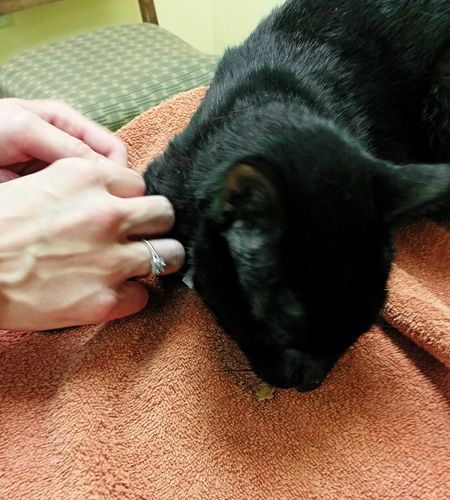Keep calm and discuss renal failure
Use this guide to take some of the stress and fear out of a chronic medical condition and offer support for pets and their owners.

A client visits with her pet, complaining Bella is drinking way more than usual and barfing all over the place and she's “off” her food. The urine specific gravity is low. You cringe when you discuss the elevated kidney values with the veterinarian.
Telling pet owners that their pet is in renal failure, whether acute or chronic, is never an easy discussion. In the case of chronic renal failure, the effects on the kidneys are irreversible and the disease can only be managed, not cured. Although the prognosis is poor, we can still offer many treatments that will help the pet through the progression of the disease.
First discuss the causes, prognosis and medical options. In many cases, the early signs of renal failure go unnoticed and the diagnosis comes as a shock. Pet owners often aren't prepared for what's in store for their pet and themselves. They will often need help calming their fears and encouragement as they learn how to help their pet. Consider these do's and don'ts:
> Do deliver the news face-to-face when possible. This helps you read body language and respond appropriately.
> Don't watch pet owners cry from a distance. Do offer comfort.
> Do consider electing a talented communicator, such as a client services coordinator, to talk with clients who need extra support to process information. This person may also have duties as a grief support specialist who can recommend support groups.
Use a lower stress approach to intravenous (IV) catheter placement. Because hydration is key in treating renal failure, fluid therapy is usually one of the first recommendations a veterinarian makes. This means an IV catheter may be placed to administer fluids, often with potassium added to maintain appropriate electrolyte levels. When you're placing an IV catheter, it's important to keep minimizing the pet's stress a constant priority. Check out a step-by-step approach (with no scruffing!) here.

Once you've stabilized the pet's hydration level, the veterinarian may recommend discharging the pet from the hospital. Use this quick checklist to discuss with pet owners any supportive treatment the veterinarian recommends to minimize their pet's clinical signs.

> Remind pet owners to offer unrestricted water access and monitor their pet's fluid intake.
> If the veterinarian recommends subcutaneous fluids and the pet owners are willing, offer instructions on how to perform this procedure at home to reduce the pet's stress level.
> Recommend renal care diets that offer high-quality protein, controlled phosphorus levels and low sodium levels.
> Talk about the need for ongoing monitoring, including checking the patient's weight once to twice weekly to monitor the pet's diet. This way the veterinarian can recommend appetite stimulants when needed.
> Remind pet owners to contact the practice if the pet experiences nausea and vomiting. The veterinarian may recommend antiemetics as needed.
> Explain any continuous monitoring the pet needs. For example, your veterinarian may closely monitor and control mineral and electrolyte levels and offer supplements when needed. The doctor may also recommend subcutaneous injections for vitamin supplementation and anemia prevention.
> Schedule regular blood work weekly or monthly, depending on the veterinarian's recommendations and based on an assessment of the pet's condition.
Although renal failure isn't curable, we as a veterinary team can work with the owner to help reduce clinical signs, make their pets more comfortable and take away some of the fear the disease may cause.
Ciera Miller, CVT, is a Firstline Editorial Advisory Board member and a technician at Metzger Animal Hospital in State College, Pa.